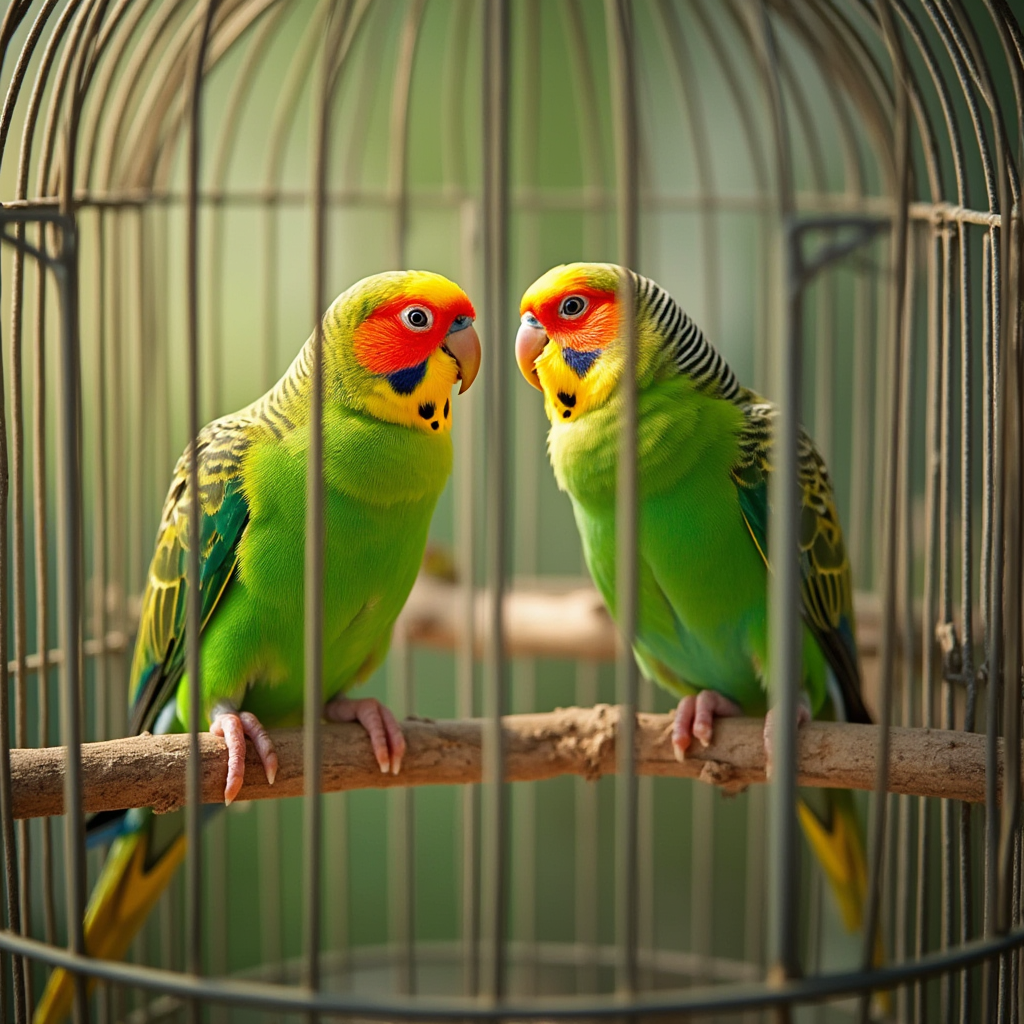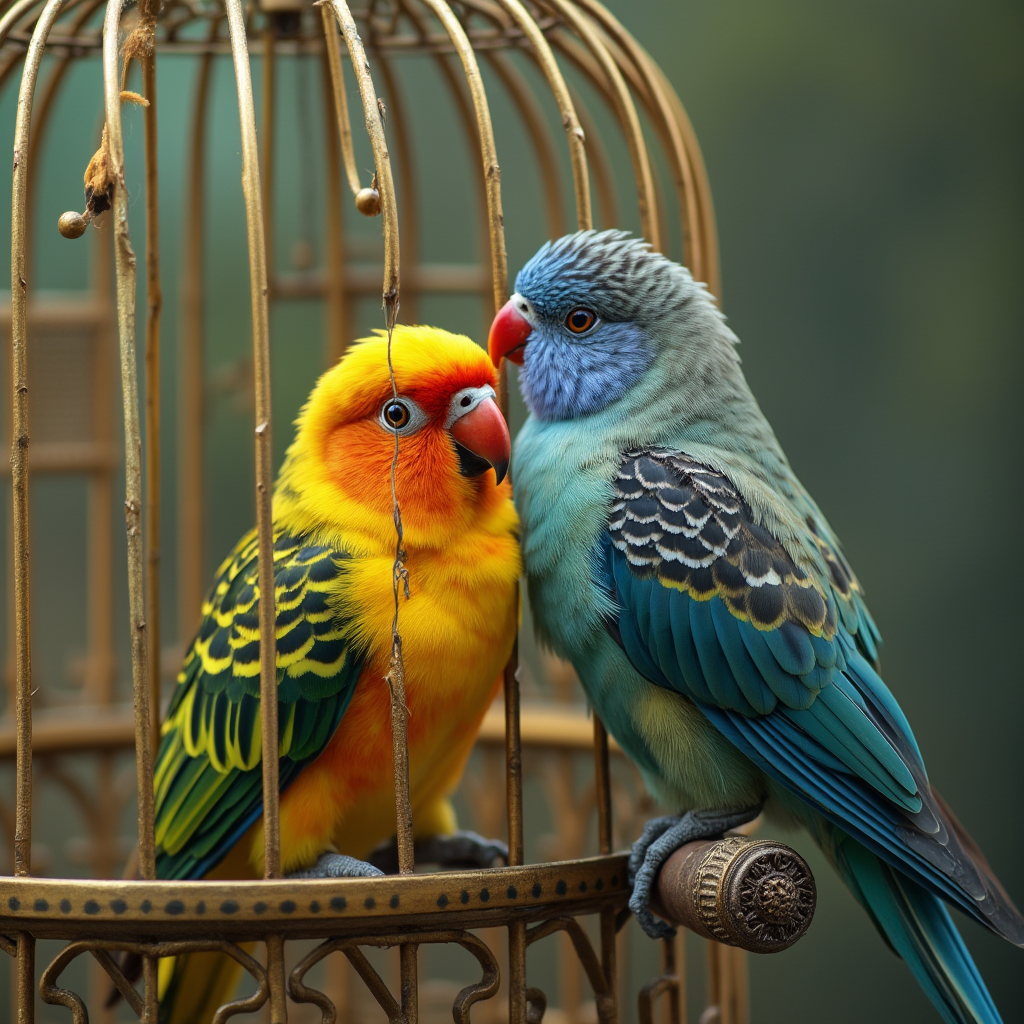

Parakeets, also known as budgerigars or “budgies,” originally hail from the open plains and forests of Australia. These charming little birds have been companions to humans for over a century, making their way into homes around the world with their cheerful disposition and colorful plumage.
You’ll find there’s a wide variety of parakeet species, each with their own unique flair. From the common budgerigar to the strikingly beautiful Indian Ringneck, these petite parrots come in an array of colors and sizes. Some even have specialties, like the talking abilities of the Quaker parakeet, showcasing their intelligence and desire to interact.
One thing that makes parakeets stand out is their playful nature. Known for being social butterflies, these birds crave attention and companionship, often mimicking the sounds around them or creating their own melodies when they’re particularly content. Their antics and vocalizations keep them entertaining and delightful housemates.
What’s probably most endearing about parakeets is their uncanny ability to bond. Not only do they thrive on social interaction with humans, but they also gel well with fellow avian friends. It’s no wonder they’ve earned a place in many hearts, acting as lively, feathered family members who bring joy and warmth to any household.
Providing Adequate Care: A Guide for Parakeet Owners
Parakeets are relatively easy pets to care for, but they still need the right environment to thrive. Choosing the right cage is crucial. It needs to be spacious enough for them to fly about without bumping into things. Plus, placing it away from drafts and direct sunlight will keep them healthy and comfortable.
Feeding your parakeet isn’t just about tossing in a handful of seeds. A balanced diet includes fresh fruits, veggies, and occasionally some protein like boiled eggs. This variety keeps them both happy and healthier in the long run.
Grooming is another essential aspect of keeping your parakeet in top condition. Regular nail trims and beak checks are necessary, and offering a shallow dish of water for the occasional bath is usually much appreciated by these clean creatures.
Being vigilant about health is something all parakeet parents need to practice. Keep an eye out for drooping posture, lack of appetite, or fluffing—these could be signs they need a vet’s attention. A parakeet’s health can change quickly, so acting fast is key if something seems off.
Enrichment Activities: Keeping Your Parakeet Happy and Engaged
A bored parakeet can quickly become an unhappy one, so mixing up their playtime activities keeps them lively and content. Toys are a fantastic way to provide mental stimulation—think swings, bells, and mirrors. Switching them out occasionally keeps your feathered friend interested and challenged.
Social interaction is key to a parakeet’s happiness. These chatty creatures love a good yammer, so talk to them often or even let them listen to the radio when you’re not around. This interaction encourages them to mimic sounds, helping them feel like a part of the flock.
Training your parakeet not only sharpens their intelligence but also strengthens your bond. Whether you’re teaching them to step up, wave, or even talk, patience and consistency are your best tools. Use treats and praise to encourage progress while keeping training sessions short and fun.
Spending quality time with your bird doesn’t have to be elaborate. Simply hanging out while they perch on your shoulder or finger, or letting them explore a safe room under your watchful eye, can be very rewarding for both you and your parakeet.
Parakeets in the Family: Harmonizing Home Dynamics
Bringing a parakeet into your home means making a few adjustments to keep the little dynamo both safe and secure. Ensuring the house is parakeet-proof, like checking for open windows or curious cats, is a top priority. They’re curious critters and love to explore, so block any potential escape routes or dangerous nooks.
Parakeets and kids can be a fantastic combination, teaching youngsters about responsibility and empathy. Always supervise these interactions closely to ensure that both the child and the bird have a safe and positive experience. Setting clear boundaries about what games are safe and how to handle the bird is key.
If you’ve got other pets, introducing them to a new feathered friend might take some work. Slow, controlled introductions can help everyone feel at ease. Remember, a parakeet can be easily spooked by a curious cat or dog, so monitor interactions closely and create a safe space where your parakeet can hang out undisturbed.
Dealing with concerns about the hustle and bustle of parakeet life, like chattiness or cleaning up feathers and occasional spills, becomes part of the routine. Covering their cage at night helps establish a bedtime and keeps them calm. Regular clean-up sessions ensure the house stays tidy, barring a few stray feathers here and there.